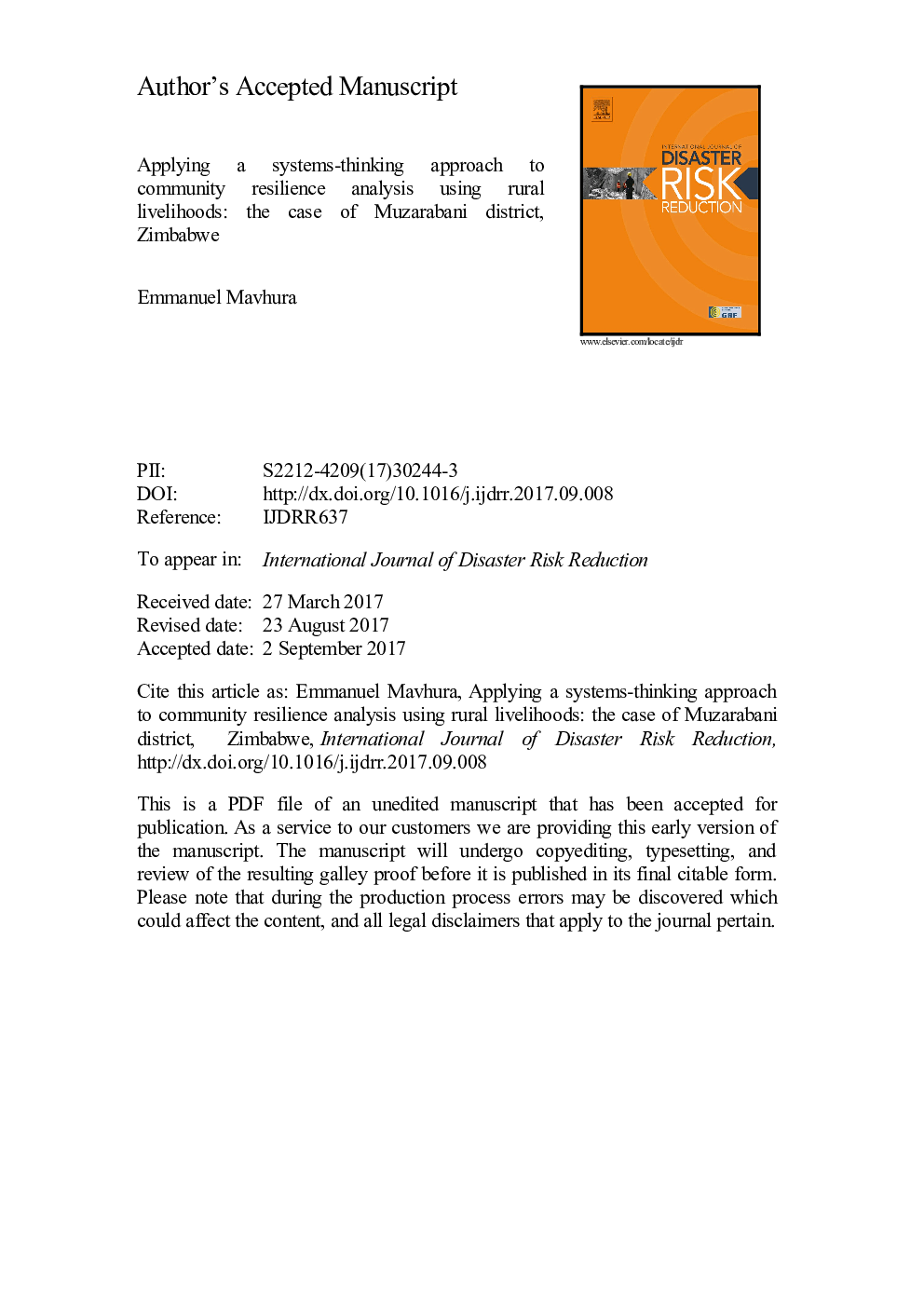| Article ID | Journal | Published Year | Pages | File Type |
|---|---|---|---|---|
| 7472230 | International Journal of Disaster Risk Reduction | 2017 | 29 Pages |
Abstract
Despite enhanced focus on building community resilience at global level, the Muzarabani district of Zimbabwe has become synonymous with drought and flood-related disasters. These disasters are manifest through food insecurity, inundation of villages, destroying crops and damaging critical infrastructure. This study applies a systems-thinking approach to examine how rural livelihoods can enhance disaster resilience in an agrarian community of Muzarabani, Zimbabwe. The data was gathered through interviews, focus groups, observations and a questionnaire survey. Although the livelihood capitals are not very robust, the Muzarabani community has developed some adaptive and absorptive strategies to manage disaster risk. These include the Zunde raMambo informal safety net, the nhimbe scheme, the mudzedze farming practice, dual cropping system and the traditional flood-proofing structures. These strategies are also linked to the development of poverty traps and river channel shifts that are manifestations of loss of resilience.
Related Topics
Physical Sciences and Engineering
Earth and Planetary Sciences
Geophysics
Authors
Emmanuel Mavhura,
